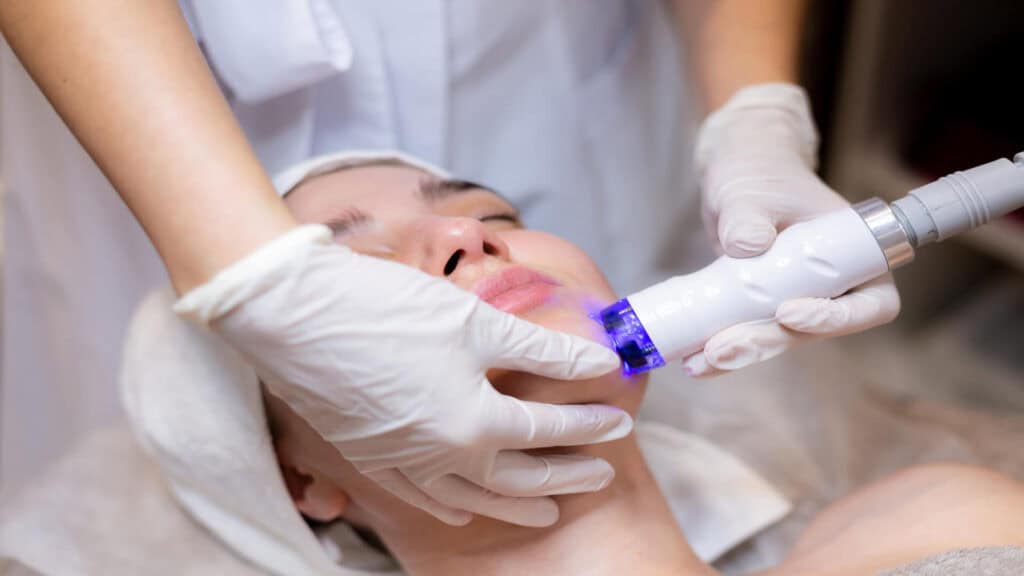Professional laser hair removal has become a popular choice for achieving long-lasting smooth and hair-free skin. This cosmetic procedure offers a convenient alternative to traditional hair removal methods such as shaving, waxing, or plucking. In this guide, we’ll explore the effectiveness, advantages, and stages of professional laser hair removal to help you make an informed decision.
Professional laser hair removal services in Brooklyn, New York.

Understanding Professional Laser Hair Removal
Professional laser hair removal is a non-invasive procedure that uses advanced laser technology to target and remove unwanted hair. The laser emits concentrated light energy that is absorbed by the pigment in hair follicles, damaging them and inhibiting future growth.
Key advantages of professional laser hair removal include:
- Precision targeting: The laser can be adjusted to focus on specific areas, ensuring that only unwanted hair is treated while leaving surrounding skin unaffected.
- Speed: Each laser pulse treats a large area of the skin, making it a faster alternative compared to methods like waxing.
- Long-term results: With multiple sessions, it offers long-term reduction in hair growth.
While it’s generally safe, the effectiveness can vary based on factors like hair color, skin type, and the individual’s hair growth patterns.
Advantages of Professional Laser Hair Removal
Here are some of the main benefits that make professional laser hair removal an attractive option:
- Long-term effectiveness: By targeting hair follicles, this procedure significantly reduces hair regrowth, resulting in smoother skin over time.
- Cost-effective in the long run: Although initial costs are higher than traditional methods, fewer maintenance sessions make it more affordable in the long term.
- Convenience: Laser hair removal requires fewer sessions compared to the repetitive nature of shaving or waxing.
- Suitable for sensitive areas: It’s a great option for areas like the face, bikini line, or underarms due to its precision.
Factors Affecting the Effectiveness of Laser Hair Removal
Several factors influence the success of laser hair removal, including:
- Hair and skin color: Dark hair and light skin respond best to treatment as the laser targets pigment. Individuals with gray, blonde, or red hair may not see the same effectiveness.
- Hair thickness: Coarse, thick hair tends to respond better to laser treatment.
- Growth cycle: Hair grows in phases, and laser hair removal is most effective during the active growth phase. Multiple sessions are required to target hair in different growth phases.
- Technician expertise: Choosing a trained and experienced technician is crucial for safe and effective treatment.
Stages of Laser Hair Removal
Now, let’s dive into the four stages of laser hair removal, from the initial consultation to post-treatment care.
1. Consultation and Assessment
The first step is a comprehensive consultation with a certified professional to assess your candidacy for the procedure. Several factors are evaluated, including:
- Skin type: Determines the appropriate laser technology and settings.
- Hair color: Laser targets melanin, so the contrast between hair and skin color influences effectiveness.
- Medical history: Ensures there are no underlying conditions that could affect the procedure’s safety or efficacy.
2. Preparing for Treatment
Proper preparation is essential for achieving the best results:
- Avoid sun exposure: Sunburnt or tanned skin can interfere with treatment and increase the risk of complications. Avoid tanning for at least two weeks before your session.
- Refrain from waxing or plucking: These methods remove the hair follicles that the laser targets. Shaving is recommended a day or two before treatment to leave the follicles intact while avoiding surface hair.
3. Laser Hair Removal Sessions
Each session involves the use of a handheld laser device that emits light onto the targeted areas. The melanin in the hair follicles absorbs this light, which is then converted to heat, damaging the follicles and preventing future growth.
The duration of a session varies depending on the treatment area:
- Small areas (e.g., upper lip, underarms) take a few minutes.
- Larger areas (e.g., legs, back) may take up to an hour.
4. Aftercare and Maintenance
Proper aftercare ensures optimal and long-lasting results:
- Temporary reactions such as redness or swelling are common but should subside within a few hours to days.
- Avoid activities that irritate the skin, like excessive sweating or swimming, during the initial healing period.
- Maintenance sessions may be needed to address any regrowth over time as hair follicles can re-enter an active growth phase.
Realistic Expectations and Possible Side Effects
It’s important to have realistic expectations. While laser hair removal can significantly reduce hair growth, it may not completely eliminate all hair in the treated area. Some fine or light hairs may remain, and occasional touch-ups may be required.
Potential side effects include:
- Redness or irritation immediately following treatment, which usually subsides quickly.
- Rare cases of blistering, scarring, or changes in pigmentation.
Conclusion
Professional laser hair removal offers an effective and long-lasting solution for unwanted hair. By understanding the benefits, factors affecting effectiveness, and stages involved in the process, you can approach the treatment with confidence. Whether you’re considering laser hair removal for small sensitive areas or larger regions of your body, this cosmetic procedure can help you achieve smooth, hair-free skin.
For best results, always choose a reputable clinic with experienced professionals, and follow their preparation and aftercare guidelines to ensure a successful and satisfying experience.